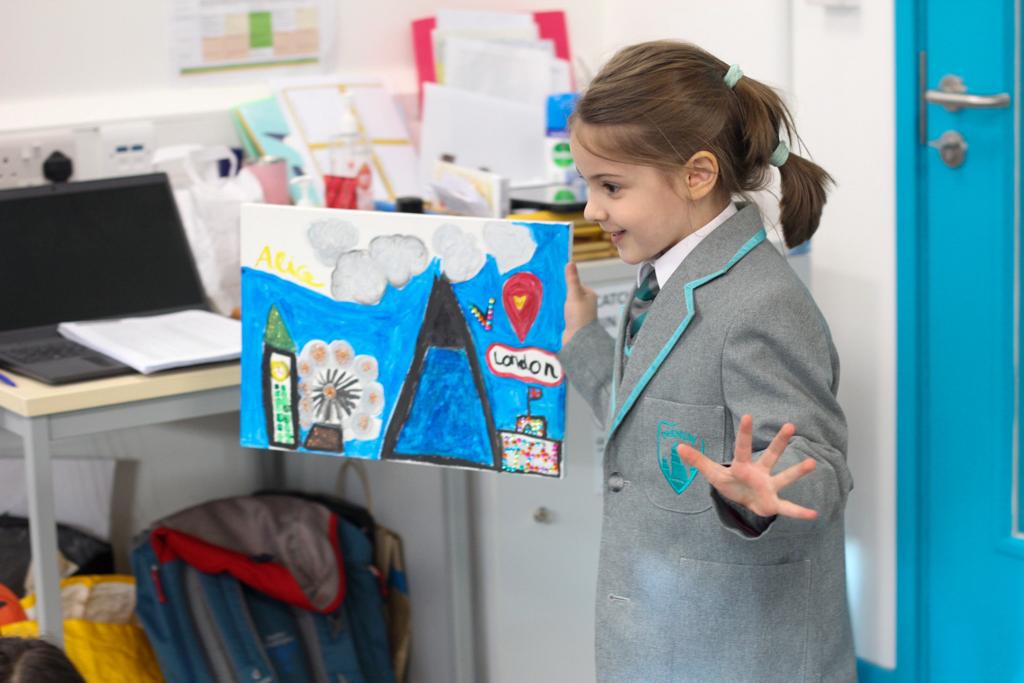At APSoL history is covered in Reception through various areas of learning, in particular, Understanding of the World. From Year 1, the subject is taught through engaging topics, following National Curriculum guidance for each year group (Key stage). At APSoL we enrich the children´s cultural capital further through history and Portuguese lessons by providing children with broad knowledge about British and Portuguese history.
We encourage pupils to be active in their research and to develop their curiosity for historical events by arranging practical activities for them to become involved in, we try to do this through a variety of engaging teaching approaches including dressing up as palaeontologists and digging up dinosaur fossils, comparing past and present through handling objects e.g toys and creating a toy museum. As the children go up the school, there will be an opportunity to learn about other key points in British and Portuguese history and the children will have an opportunity to develop their empathy with the past (experiencing first hand) becoming an evacuee during the 2nd World War by taking the train, dressed appropriately for the era, preparing a Tudor banquet for an audience, a day in the life of an Egyptian. Our aim is also to encourage curiosity, by having focused dress up days and activities related to their focus: as an archaeologist and embarking on a dig.
Our home learning is closely tied to our termly project. The children have a focus for the project linked to their history or Geography class topic, they can then develop their creative abilities by selecting the media of presentation for example: creating a youtube video of their presentation, creating a 3D model, writing a book etc
We aim to develop cross curricular links to aid their knowledge of historical events and enquiry skills, writing or role playing in role, role playing or recreating scenes from the past.
Intent
To teach, not only the content of history but also the crucial skills and concepts including developing a big picture of the past.
To make the History curriculum relevant to the children of APSoL.
For the children to develop awareness and a curiosity of where they come from and why it has developed the way it has.
To identify how life in the past was different and to enquire why:
• What happened before this period / topic/ event? What happened after?
• What has changed? What has stayed the same?
• Where have we come across something similar before?
• Do you remember when we…?
SEND/ ESL-Provision is adapted so that all children can access the history curriculum. E.g. differentiated activities, sentence stems, scaffolds and visuals.
Implementation
To develop a progressive model of content (what topics to teach from year to year) – based on National Curriculum
How to progress children’s understanding and skill (through these topics) in relation to the bigger picture (chronology),
To develop understanding of the key historical disciplinary concepts.
All teachers will plan to ensure there is evident skill progression across all year groups.
All teachers will regularly and accurately assess the subject objectives and key skills in order to inform teacher planning and next steps for learning.
Impact
Knowledge organisers for each topic provide key knowledge, facts and vocabulary that children need to acquire, as well as research projects that will encourage creativity, independence and autonomy .These will support to structure the learning, deepen children´s knowledge, help them become more autonomous and take ownership in their learning.
Pupil voice from all children which will show a growing curiosity towards historical events studied; fuelling a desire to learn more.
There is clear progression from key stage to key stage, where children have the opportunity to learn about local, national and global history through their time at APSoL. This progression of historical skills and concepts builds on the pupils’ prior learning and supports the development of long-term memory.








